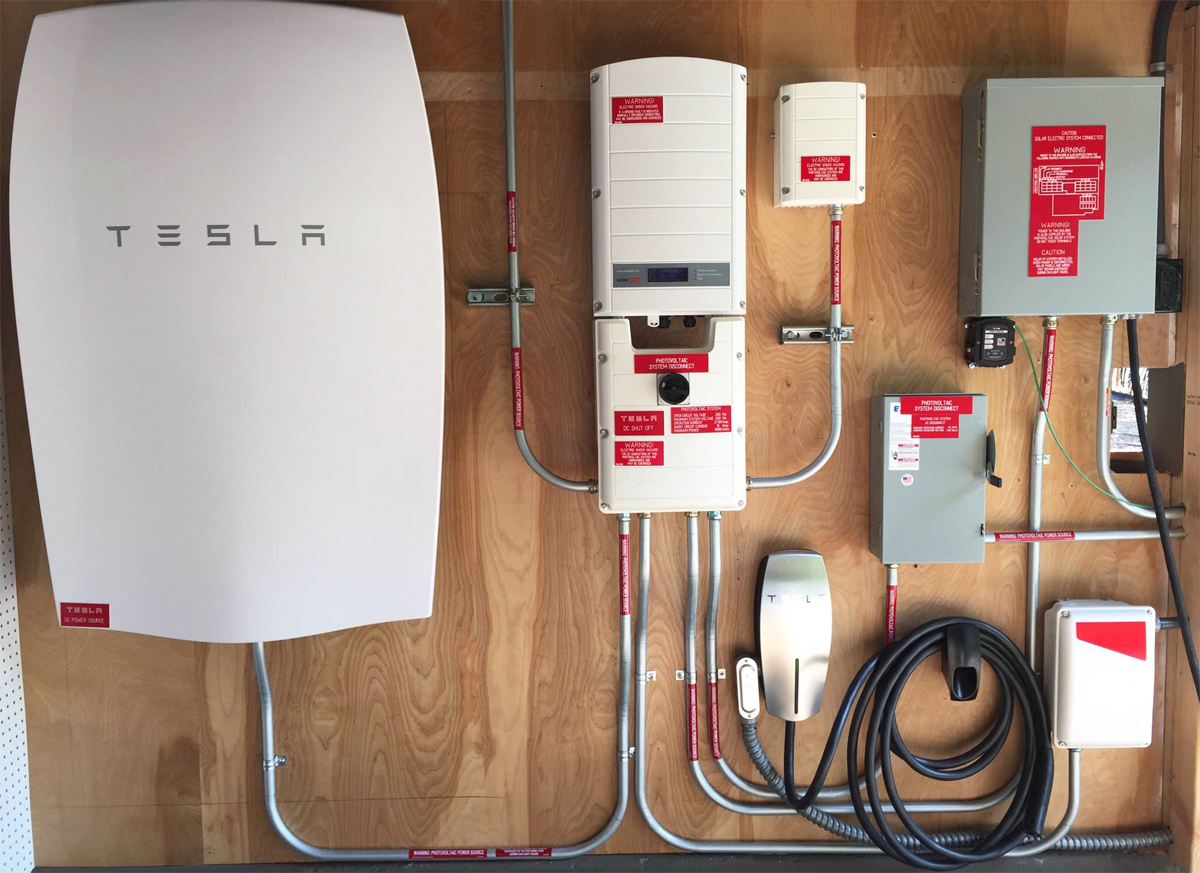Power on the Cutting Edge
 |
|
|
 |
|
|
 |
|
|
|
|
Barry and Rosemary Brisco of the San Mateo Highlands have seen the future—and it looks compelling enough, they say, to sustainably power their Eichler—and yours too—during a blackout.
"I think that, in the future, most solar-energy homes will have a battery," predicts Barry, a 16-year Eichler owner. "It makes sense economically and practically."
"It's just another opportunity to be at the leading edge of technology," agrees Jarom Feriante, CEO of Dura-Foam Roofing & Solar Center, which installed photovoltaic (PV) panels and a Tesla Powerwall battery system recently at the Brisco Eichler.
Admittedly, this year has shown signs of the stars aligning for self-generated power storage in homes. Several states have increased incentives for self-generation and storage, and some started moving away from net-energy metering (NEM) towards time-of-use rate systems, all factors that could favor home batteries. A recent change in California energy law directs three-quarters of all self-generation incentives toward renewable-energy storage projects.
"Energy storage moves front and center" headlined a subsequent story in PV magazine. That piece added to positive press about the market that included a recent Los Angeles Times story on Sonnen, a German competitor to Tesla based in North Hollywood, that in recent months had surpassed the Bay Area company in home battery sales.
"Utility companies are implementing rate structures that point toward a better case for energy storage," reasons Feriante. "For example, NEM 2.0 mandates time-of-use rates that adjust electricity prices based on varying electric demand throughout the day. With battery storage, you can charge batteries when power is cheap and use that power when grid rates are high."
Feriante says homes in rural areas off the grid are "where you would traditionally see energy-storage systems as an alternative to running lengthy power lines to remote locations." However, the Briscos represent "a new class of grid-tied energy-storage consumers who value automated back-up power coupled with smart energy features."
The Briscos own two all-electric Tesla cars, whose 80-kilowatt hour (kWh) batteries account for nearly half the couple's monthly electrical usage. The cars, however, weren't the main factor in their deciding to buy a home battery.
"The motivation to get the battery wasn't really related to the cars," Barry clarified. "You don't charge the car from the battery. You charge the car when you get cheap power from the grid."




